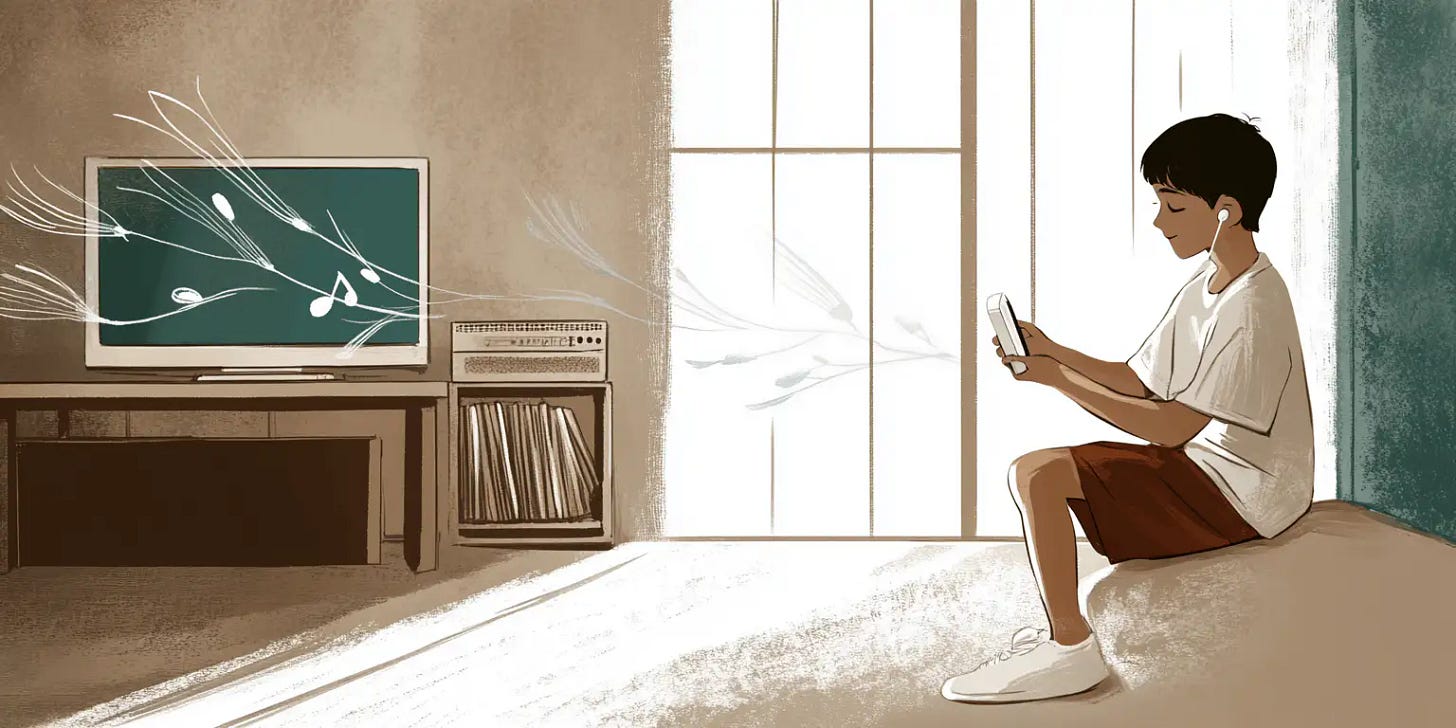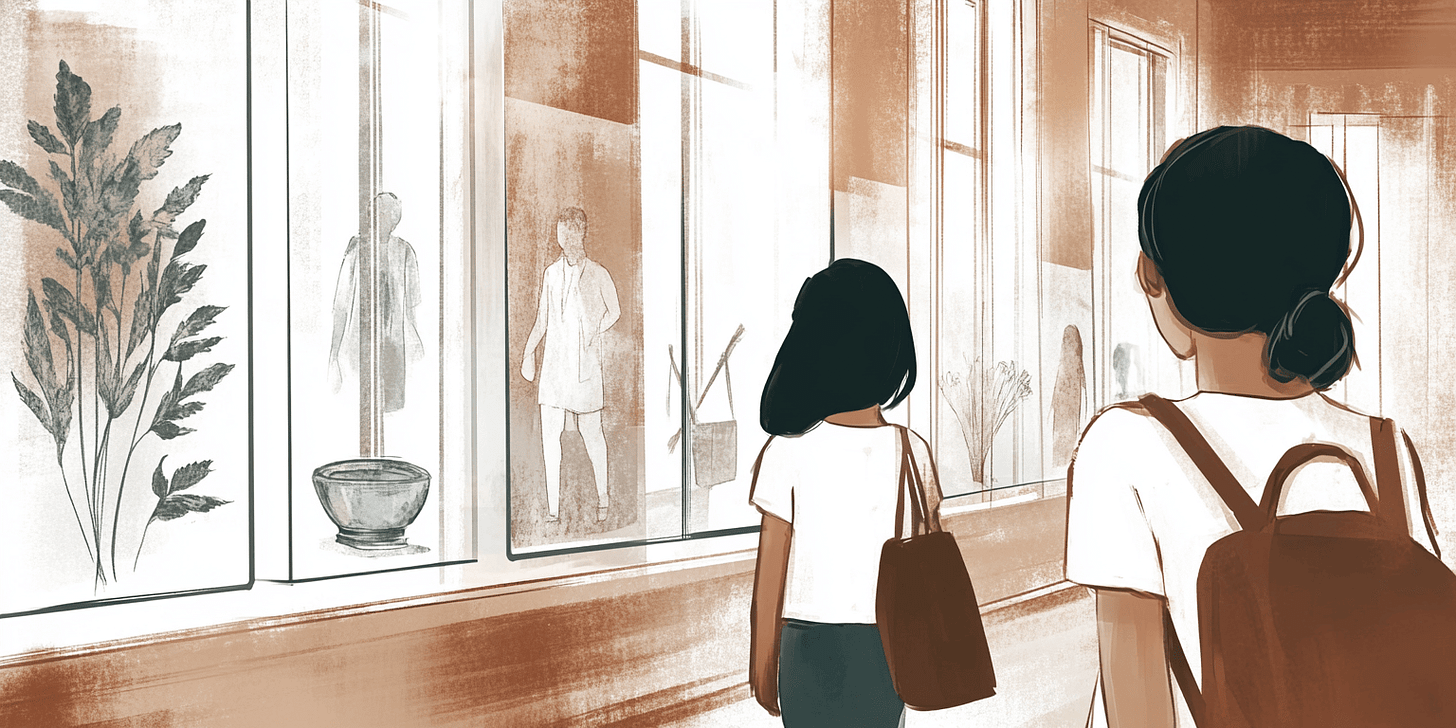Where's the vision in your vision statement?
Why most vision statements fail before they even begin
People pour their lives into their work.
They wake up to emails. Reply to them at red lights. Bring their laptops to holiday just in case. Piece by piece, they trade precious moments of their lives to organisations that demand their total dedication.
But total dedication to what?
That’s what a vision statement is supposed to tell you. To show you precisely whose life you’re changing. To remind you why you’re here, and how the world is becoming slightly less broken because of you.
“Our vision is to create best-in-class technological solutions that enable sustainable growth for tomorrow’s challenges”
Which… class? Where are these… technological solutions? What exactly is growing sustainably now that wasn’t before? Whose tomorrow are we talking about?
“A world where thriving ecosystems empower communities to benefit from inclusive local development”
Where are these thriving ecosystems? Which communities are being empowered? What does inclusive local development look like? What does it change for people?
Why should anyone give so much for something so vague?
These are not vision statements. They’re just… words. Words that sound important, but don’t mean anything. Words that exist, but don’t do anything.
It has to let you see
The problem with vision statements isn’t just that they are badly written. The problem is that most organisations don’t understand what a vision is.
“Vision” means to see. Yet, most vision statements don’t let you see anything.
The problem with words like “human flourishing” or “technological leap” is that they try too hard to explain the future, when what’s really needed is to evoke the future. To let people experience the future.
Abstractions like “systems change” aren’t how we relate with our everyday world. You can’t hold a “system”. You can’t touch “change”.
A vision statement has to give you more than an idea. It has to give you an image.
When Steve Jobs said, “We’re going to put a thousand songs in your pocket”, people didn’t hear a product pitch. They saw it. They felt it. There was no mention of MP3s, storage, or bitrates. Just a vivid, tactile image: my whole music library… in my pocket.
Try this: Take your current vision statement, and try to understand what it’s really trying to say. Then, start rewriting it using words that create concrete, sensory images in your mind. Ask yourself: “Who do I see in this new world? What’s a day in their life like? What, precisely, are they doing differently tomorrow because of our work today?”
Remember: If it’s too hard to picture, it’ll be too hard to care about.
It has to matter
Let’s take a vision statement that passes the above test:
“A world where every cup of coffee connects you to the farm it came from.”
It works pretty well! You can see the cup. Smell the coffee. Maybe even imagine reading a little story about the farmer while you sip it.
There’s one problem: It doesn’t tell you what’s at stake. It shows you a future, but it doesn’t tell you why that future matters.
Who hurts if you fail? Whose life do you change if you succeed?
Now consider this:
“A world where the farmers who grow your coffee can actually afford to drink it"
This one hurts a little. You don't just see the farmer. You feel the disconnect between the producer and the consumer. The imbalance in this relationship. You feel the guilt of how normalised underpaid labour is in our society, and how much we take it for granted.
Or, consider Muhammad Yunus’ vision for Grameen Bank:
I see a world someday, where the only place we’ll see poverty will be in the museums: poverty museums. […] When school children will be on a tour of the poverty museum, they will be horrified to see the misery and indignity of human beings. They will blame their forefathers for tolerating this inhuman condition.
You see the moral failure. You feel shame. You feel implicated, because you’ve been named part of the problem.
These vision statements are powerful because they don’t stop at showing you what’s possible. They show you why they’re necessary.
Consider the difference between what you create and what you prevent. Most vision statements focus exclusively on creation, forgetting that our greatest impact often comes from what we help avoid.
Ask yourself: “What suffering will continue if our work disappeared tomorrow? Who’s going to bear the human cost if we fail to realise our vision? What’s really on the line – not for us, but for them?” The answers might reveal the emotional centre missing in your vision.
It has to move
Visioning workshops often end with a statement. We write the words, put them on a slide, and assume the job is done.
But the job isn't done. It's only just begun.
Take, for example, a web design studio whose vision is to create “a slower, more beautiful internet”.
They care about craft. They talk about detail. But walk inside, and you see designers recycling component kits because “that’s what the client asked for.” Developers shipping half-baked prototypes because the deadline’s looming and the money is too good to lose.
Inside the studio, no one has the time to talk about taste or beauty. The work is far from craft. It’s mechanistic production. Instead of moving towards its vision of a slower, beautiful web, it’s actively moving away from it.
What’s the problem here?
That a vision doesn’t exist? That it doesn’t matter? No.
The problem is that it doesn’t move.
Once the words are on paper, they have to travel. Not just sit in a document that gets opened once a year. Like blood, they have to flow through your organisation’s veins and circulate across culture.
When a vision moves, it helps you understand how your vision of something far in the future connects to what you’re doing now. How that beautiful future is relevant to this project, this client, this decision. It should help you connect the dots, and see – with your own eyes — why your efforts matter.
And when you can see that, it sharpens your sense of agency. You start believing. You start showing up.
To put this into practice, start by identifying three decisions you have made in the last few months. Ask yourself: “What role did our vision play in us making these choices? Did it influence which options we considered? The criteria we used? Did these decisions move us one step closer to our vision, or one step further from it? In the future, how do we make sure our vision always has a seat at the table?”
Your vision should be the lens through which you see the world. It shouldn’t just show you the future, but transform how you see the present. That’s the difference between having a vision and being a visionary.


